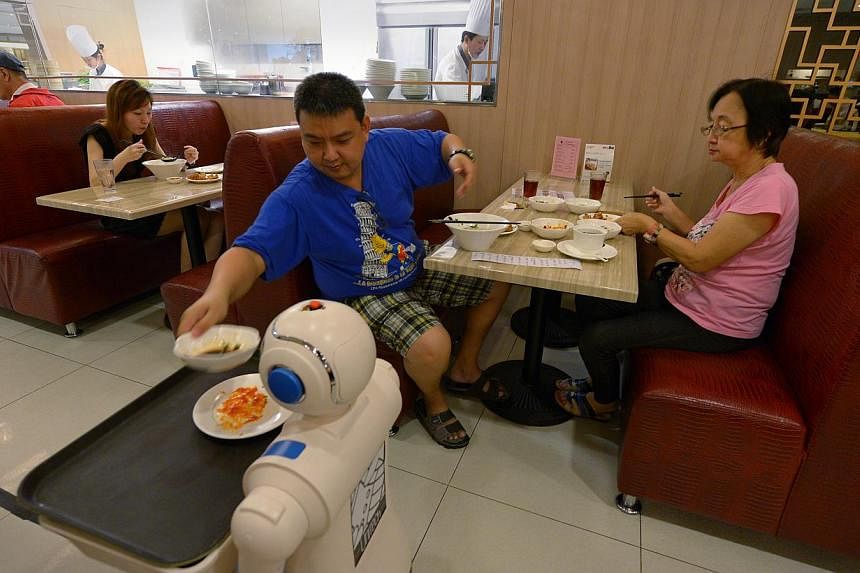Economist Paul Krugman once said: "Productivity isn't everything but, in the long run, it is almost everything. A country's ability to improve its standard of living over time depends almost entirely on its ability to raise its output per worker."
Introduced in 2010, the Productivity and Innovation Credit (PIC) scheme was a bold step to move Singapore up the productivity ladder. The target: to hit an annual productivity growth rate of 2 per cent to 3 per cent in 10 years. We now stand at the half-way mark of this journey.
How effective has the PIC been?
Results have been less than stellar. Data published by the Singapore Department of Statistics reveals that productivity across all industries fell 1.4 per cent and 0.2 per cent in 2012 and 2013 respectively. Last year, productivity grew 0.7 per cent in the first quarter, but fell 1.3 per cent and 0.8 per cent in the second and third quarters, respectively.
Productivity improvements usually do not happen overnight. Yet, the lack of results is a concern.
The intent behind productivity-centric schemes is to be lauded. But moving the needle from policy to effective implementation looks to be the real challenge.
Raising productivity through innovation has been the Government's focus.
Companies have received support from grants such as the ICT for Productivity and Growth Programme, which funds part of the investments in technology capabilities to improve productivity, as well as tax incentives such as the PIC.
PIC's appeal varies
THE PIC offers enhanced tax deductions, with an option to convert such expenditure into a cash bonus subject to certain caps. The benefits are provided for companies investing in six categories of activities: acquisition and leasing of certain IT and automation equipment; training of employees; acquisition and in-licensing of intellectual property rights; registration of patents, trademarks, designs and plant varieties; R&D activities; and design projects approved by the DesignSingapore Council.
A 400 per cent deduction for up to $400,000 (or $600,000 for qualifying small and medium-sized enterprises) in annual spending is provided for each category. Besides the PIC, current tax legislation also provides for a 150 per cent deduction for qualifying R&D expenditure.
Certain categories of the PIC scheme are more popular than others. In the year of assessment 2012, the bulk of PIC claims (62 per cent) were related to automation equipment, while employee training accounted for 25 per cent of the claims.
The remaining categories have had limited uptake. Only 3 per cent of the PIC claims were related to R&D activities, design projects and registration of intellectual property rights.
This is cause for concern, because R&D generally enhances the competitiveness of businesses and is a powerful driver of productivity growth.
However, R&D does not yield an immediate profit and generally carries a greater risk and an uncertain return on investment.
Many countries, recognising the positive spillover effects and importance of R&D and innovation, have some form of incentive scheme that encourages R&D investments.
The Organisation for Economic Cooperation and Development concurs, commenting that "fostering innovation is an important element of growth strategies because intangibles, such as patents, have become one of the key value drivers of many business models".
Less onerous claim process
FROM a tax benefit perspective, Singapore's enhanced tax deduction for R&D is comparable to other regimes around the world. However, the Inland Revenue Authority of Singapore's (Iras) significantly stricter criteria, and protracted claiming process, may have deterred many companies from considering this incentive seriously in their R&D efforts, as evidenced by its low uptake.
Taxpayers can currently claim the R&D enhanced tax deductions without undergoing a pre-approval process.
They are required to submit to Iras technical details explaining how the nature of the project meets Iras' published criteria, as well as a breakdown of the project-related qualifying expenditure.
These technical descriptions can be challenging for a layperson without the appropriate background to understand.
A lengthy clarification process may thus ensue, resulting in a misalignment on what constitutes R&D between Iras and the taxpayer.
Perhaps Singapore should implement the model adopted by other countries, where the review of technical eligibility and expenditure is undertaken by two separate teams - a technical or research body, and the tax authority.
This ensures robust two-way discussion and a deeper understanding of the needs and technical aspects of the projects undertaken, resulting in a more efficient and effective claim process.
To build a knowledge-based economy with a strong innovation culture, Singapore needs to critically address the gaps in the execution of programmes sooner, rather than later.
There are only five years left to meet the 2020 productivity target. The countdown has begun.
Chung-Sim Siew Moon is partner and head of tax, and Tan Bin Eng is partner for business incentives advisory at EY in Singapore.

